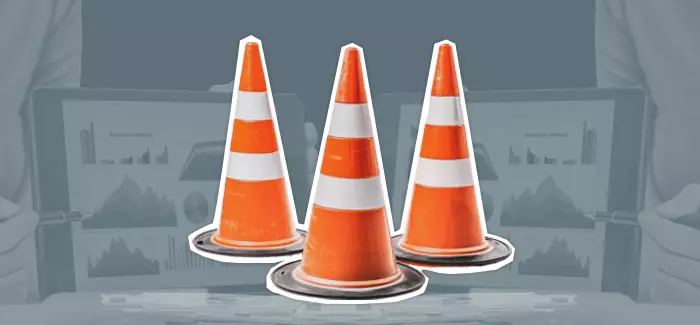Articles > Public Administration > What is a public works director?
What is a public works director?

Written by Trey Edgington

Reviewed by Christina Neider, EdD, Dean of the College of Social and Behavioral Sciences

A public works director manages the public services and infrastructure for a city, as well as the employees who perform those services, such as waste management, recreational facilities, water systems, street maintenance and drainage. How does one build a career in this field? Let’s take a closer look at what’s involved.
What does a public works director do?
A director of public works is often tasked with recruiting, hiring and training the employees in the departments they oversee. They may also conduct performance reviews with current employees.
Personnel
A director of public works is often tasked with recruiting, hiring and training the employees in the departments they oversee. They may also conduct performance reviews with current employees.
Services and infrastructure
Public works directors are responsible for managing a municipality’s services and infrastructure (or public works), including:
- Solid waste management
- Water utilities
- Emergency services
- Streets and sidewalks
- Transportation
- Fleet and equipment
- Public buildings
These civil servants may also maintain other city infrastructure.
Budgeting and planning
Individuals in public works are responsible for managing budgets to pay for things like salaries, equipment maintenance and materials. They also oversee the budgets once they are implemented and adjust them when necessary. To do this, they must have a depth of knowledge in project management, finance and accounting while staying on top of trends that may affect costs in the future.
Planning new city services with the planning department, and, as noted, maintaining brick-and-mortar public facilities also fall under their jurisdiction. They often hire contractors or consultants, and make sure all aspects of a project meet federal, state and local legal requirements. Besides working with vendors and regulatory bodies, public works professionals must partner with other city officials and councils to ensure everyone collaborates.
Compliance
When planning a new project, one of the first things a public works director needs to consider is compliance. Each aspect of the project must align with environmental, safety and administrative regulations set forth by federal, state and municipal governments. They are also responsible for ensuring contractors comply with laws.
Ongoing services, like water and sewer treatment, road maintenance, and waste collection, must also stay within legal bounds, which may change over time.
Education and skills for managing public works
Public works directors wear many hats, including people manager, financial manager, facilities manager and project manager (overseeing construction contracts and management). You may be wondering how people get their start in this role. While career paths may vary, typically an education is required.
Education
According to ZipRecruiter, the role typically requires a bachelor’s degree in civil engineering. Some employers may prefer candidates to have a master’s degree in public administration.
Public administration degree programs may include law and public administration courses that explore legal concepts that apply to public administration. Students should learn how legislative and judicial processes interact with and affect local and state governments. Such courses often touch on topics like enabling laws, open-meeting/sunshine provisions and the Administrative Procedures Act.
Students may also be required to take a public administration budgeting course, which will likely analyze how the budgeting process can affect public policy. They will also learn the tools used in accounting for public administration and topics like capital and operating expenditures, not-for-profit fiscal management and budgetary decision-making.
Students in public administration courses will also learn how technology affects public administrations in ways such as self-service web portals, social media, accessibility, data security and mobility.
Other courses in a graduate public administration degree program may include:
- Data analysis
- Human capital
- Communication
- Program evaluation
- Finance
- Policy planning and implementation
Skills and knowledge
Prospective directors usually need five to seven years of experience in civil and public administration roles . During their hands-on experience, they may learn valuable insights on such topics as the ins and outs of waste management or the specifics on traffic control.
Communication — both written and oral — is an important skill for any leader, and this role is no exception. Public works executives must collaborate with a variety of individuals and groups to ensure everything runs smoothly. This includes consultants and contractors, city employees, regulatory bodies, elected officials and the public they serve.
These high-level civil administrators need to be able to write reports that clearly communicate plans for the city in detail, from budgets to the human resources required for a new initiative.
Leadership skills also can be beneficial in this role. Public works directors need to know how to build and manage teams, while also developing the individuals they manage. Delegation and conflict resolution are important tools that can help them manage teams of individuals with different personalities, work styles and experience.
Regulations in public works
Regulations apply to many aspects of public works, along with the regulatory bodies that create and enforce those regulations.
Because public works involves the people who build and maintain infrastructure like sewer systems, public buildings, streets and similar entities, labor standards play a large role in the job.
Fair wages and safety concerns are important when it comes to human capital, so those who manage public works employees must understand legal requirements from the U.S. Department of Labor as well as how to interact with the agency. Most states also have labor departments, so public works administrators must be able to build relationships with representatives from those organizations as well.
The Occupational Safety and Health Administration (OSHA) is part of the U.S. Department of Labor, and it sets and enforces rules about safe working conditions. These rules can affect jobs related to construction, water treatment and similar areas in a municipal service director’s purview.
Public works administrators must also be well versed in laws set forth and enforced by the U.S. Environmental Protection Agency.
Like the Department of Labor, most federal regulatory bodies have analogous departments at the state and local levels that a director must also engage with.
Technology in public works
As with any aspect of modern life, technology plays an increasingly large role in public works. Public works professionals need to be aware of the tech in place and the new tech on the horizon, from environmentally safe construction technology to the Internet of Things. The following are just a few of the technologies used in public works.
Geographic information systems
Geographic information systems (GIS) help gather data to be used in providing services, such as utilities, to citizens and organizations in a community. Users can access the GIS to collect, save, edit, interpret, oversee and display geographical or spatial information. This data allows users to see patterns, trends and relationships by layering them on a map. Public works directors may use this tech to measure population density, measure distances between schools and sources of pollution, or find the ideal location for a new city courthouse.
Telematics
Telematics are the sensors attached to municipal vehicles, such as snowplows and cherry pickers, that collect data to improve the efficiency of services. Public works officials can use this data to see what equipment is being used and what isn’t, which can lead to better vehicle maintenance schedules. This also lets the director know which equipment they can retire and what new equipment needs to be acquired.
Intelligent transportation and related tech
We all know that traffic lights, especially during the wee hours of the morning, can be frustrating. If you’ve ever stopped for a red light when no one was around to take the green light, it’s because most traffic lights are set on timers. But technology has already worked to solve this issue by using a system that gathers traffic data and adjust lights in real time.
Other technology used in public works includes:
- Fleet electrification
- Smart technologies
- Asset management technology
- Microgrids
- AI condition assessment data collection
Learn more about public works directors and other public administration jobs
Being a public works director means playing an important role in in your community. With an appropriate bachelor’s degree, find out how a Master of Public Administration from University of Phoenix can help prepare you with relevant skills in this field.
Learn more about the online programs at UOPX .

ABOUT THE AUTHOR
Trey Edgington holds a Master of Arts in creative writing from the University of North Texas, and his short fiction has been published in several literary journals. His professional journey also includes more than 15 years of experience in higher education and healthcare marketing. Over the course of his career, he has held such roles as adjunct instructor of English, senior content editor & writer, and content and SEO manager. Most recently, he has taken on the role of generative AI language consultant.

ABOUT THE REVIEWER
Christina Neider is the dean of the University of Phoenix College of Social and Behavioral Sciences. Neider’s career spans more than 30 years in academia, healthcare and the U.S. Air Force. She has held several academic leadership roles at University of Phoenix, and she is the Vice President of membership for the Arizona Chapter of the Healthcare Information and Management Systems Society.
This article has been vetted by University of Phoenix's editorial advisory committee.
Read more about our editorial process.


